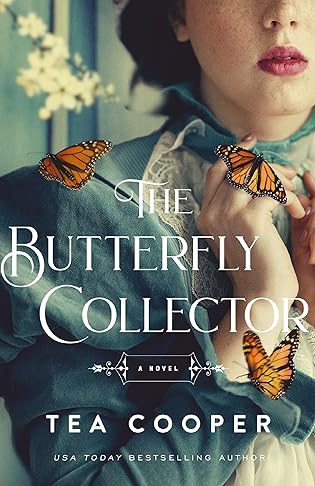 The Butterfly Collector by Tea Cooper
The Butterfly Collector by Tea Cooper Narrator: Emily Barrett
Format: audiobook, eARC
Source: supplied by publisher via NetGalley
Formats available: paperback, ebook, audiobook
Genres: historical fiction, historical mystery, timeslip fiction
Pages: 400
Length: 10 hours and 43 minutes
Published by Harper Muse on November 3, 2022
Purchasing Info: Author's Website, Publisher's Website, Amazon, Barnes & Noble, Kobo, Bookshop.org, Better World Books
Goodreads
What connects a botanical illustration of a butterfly with a missing baby and an enigma fifty years in the making? A twisty historical mystery from a bestselling Australian author.
1868 Morpeth Theodora Breckenridge, still in mourning after the loss of her parents and brother at sea, is more interested in working quietly on her art at the family's country estate than she is finding a husband in Sydney society, even if her elder sister Florence has other ideas. Theodora seeks to emulate prestigious nature illustrators, the Scott sisters, who lived nearby, so she cannot believe her luck when she discovers a butterfly never before sighted in Australia. With the help of Clarrie, her maid, and her beautiful illustrations, she is poised to make a natural science discovery that will put her name on the map. Then Clarrie's new-born son goes missing and everything changes.
1922 Sydney When would-be correspondent Verity Binks is sent an anonymous parcel containing a spectacular butterfly costume and an invitation to the Sydney Artists Masquerade Ball on the same day she loses her job at The Arrow, she is both baffled and determined to go. Her late grandfather Sid, an esteemed newspaperman, would expect no less of her. At the ball, she lands a juicy commission to write the history of the Treadwell Foundation - an institution that supports disgraced young women and their babies. But as she begins to dig, her investigation quickly leads her to an increasingly dark and complex mystery, a mystery fifty years in the making. Can she solve it? And will anyone believe her if she does?
My Review:
There’s a butterfly effect in chaos theory. You know the one, or at least the way it plays out in fiction, particularly in relation to time travel, that a tiny change halfway around the world creates incrementally increasing changes in circumstances the further one gets from that first new flap of the titular butterfly’s wings.
That butterfly effect turns out to be a metaphor for this entire story – complete with resultant chaos – even though there’s no time travel in the usual sense. There’s just a story that takes place at multiple points in the same time stream, with a particularly well-traveled species of butterfly at the heart of each of those multiple points.
The monarch butterfly is a familiar sight in North America. But when and where this story begins, it was not, which is tied up in the very reason why the familiar Monarch is called Wanderer in Australia – because it somehow managed to wander from North America to the Land Down Under, a journey far longer than a butterfly’s lifespan, even if a colony could manage that distance out of sight of land on their beautiful but fragile wings.
So we first meet amateur lepidopterist Theodora Breckenridge when a then unknown to her wanderer butterfly alights on her fingers in 1868 outside the village of Morpeth on the banks of the Hunter River. In New South Wales, Australia. Where no monarch butterfly has EVER been seen to that date.
Just laid-off newspaper reporter Verity Binks’ introduction to the same species occurs in 1922, in the form of a masquerade costume for the upcoming Sydney Artists’ Masquerade Ball. She receives a package from an unnamed and un-guessed at benefactor, consisting of an invitation to the Artists’ Ball she could not otherwise afford – and a caped costume in the shape and form of a wanderer butterfly’s distinctive wings.
The link between Theodora in 1868 and Verity in 1922 is in the person of a third woman, Clarrie, and an unthinkably terrible but murderously profitable criminal enterprise that still cries out for justice.
A justice that Verity is determined to provide, whoever it hurts and whatever it costs.
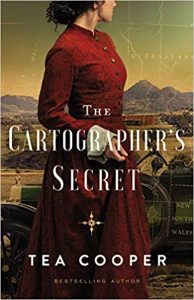 Escape Rating B: I have to say that I ended up with mixed feelings all over the place while listening to and reading The Butterfly Collector. In the end, the 1922 story carried me through, but it’s the 1868 story that held the most bone-chilling horrors. Real-life horror, like revenge, is compellingly served ice cold – and the horrors of this story, based on real historical events – had plenty of chills to deliver.
Escape Rating B: I have to say that I ended up with mixed feelings all over the place while listening to and reading The Butterfly Collector. In the end, the 1922 story carried me through, but it’s the 1868 story that held the most bone-chilling horrors. Real-life horror, like revenge, is compellingly served ice cold – and the horrors of this story, based on real historical events – had plenty of chills to deliver.
I had two issues with this story, and the first one led to the second in a way that made the first half a fairly hard go for reasons that are certainly a ‘me’ problem but could also be a ‘you’ problem if we have some of the same inclinations.
One of the issues I’m finding increasingly hard to get through in female-centered historical fiction of any kind is the ubiquitous and nearly obligatory opening third – if not a bit longer – that details all the restrictions that women faced in whatever period the story is set in regards to having agency and independence. As this book alternates between three historical female perspectives, each of whom are hedged about by such restrictions on all sides, it took a lot of pages to get each of them into places where they had some freedom of movement.
In the end, I found myself following Verity’s part of the story in 1922 the most easily because Verity IS in a position to act on her own for reasons that are mostly tragic. Her parents and grandparents are deceased, she has no male siblings, it’s after WW1 which cost her her job as a newspaper reporter but doesn’t stop her from finding freelance work, which she does and which kicks off the mystery of the piece.
Neither Theodora nor Clarrie have true freedom of movement, Theodora for societal expectation reasons and Clarrie because of restrictions due to her socioeconomic class. That they are able to help each other eases those constraints for both of them, but it takes a while for the situation to reach that far.
That I was frustrated by the slow pace of the early parts of all their stories led to my second frustration. I began this book in audio, but the story was going slowly for all the above reasons and the actually quite good quality of the narration made it worse. Which may seem contradictory, but as the reader was doing an excellent job with the Australian accent – or so it seemed to my American ears – her reading cadence was slower than I could stand in a story that was already proceeding at a snail’s pace.
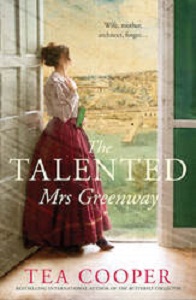 Once I switched to text it all got better, and I was able to finally be captured by the increasingly frenetic pace of the mystery of it all. Not just a terrible crime, but decades of a profitable series of terrible crimes come to light and sticks a knife into Verity’s heart AND her perceptions of her family’s history in a way that makes the whole story both sing and sting at the same time.
Once I switched to text it all got better, and I was able to finally be captured by the increasingly frenetic pace of the mystery of it all. Not just a terrible crime, but decades of a profitable series of terrible crimes come to light and sticks a knife into Verity’s heart AND her perceptions of her family’s history in a way that makes the whole story both sing and sting at the same time.
I picked this book up because I fell hard for several of the author’s previous books, The Woman in the Green Dress, The Cartographer’s Secret and The Girl in the Painting. While The Butterfly Collector didn’t work nearly as well for me as those earlier books, the heart of the mystery is both awfully compelling and compellingly awful, and it did engage me fully once the story really got into it. So while I’d recommend this particular book with some caveats, I’ll still be picking up the author’s next book, The Talented Mrs Greenway, when it reaches these North American shores.

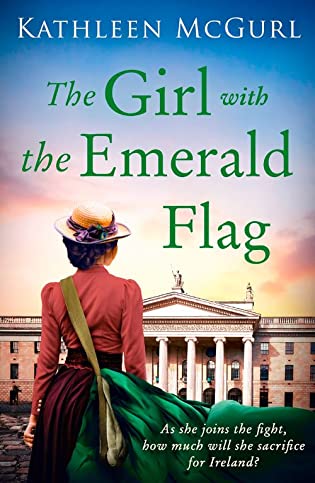 The Girl with the Emerald Flag by
The Girl with the Emerald Flag by 
 Kathleen McGurl lives near the coast in Christchurch, England. She writes dual timeline novels in which a historical mystery is uncovered and resolved in the present day. She is married to an Irishman and has two adult sons. She enjoys travelling, especially in her motorhome around Europe and has of course visited Ireland many times.
Kathleen McGurl lives near the coast in Christchurch, England. She writes dual timeline novels in which a historical mystery is uncovered and resolved in the present day. She is married to an Irishman and has two adult sons. She enjoys travelling, especially in her motorhome around Europe and has of course visited Ireland many times.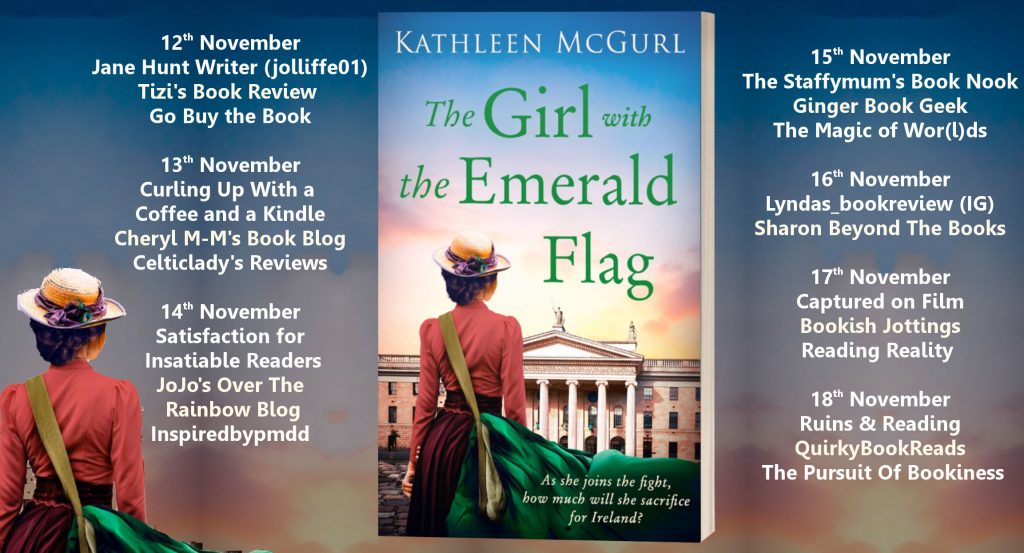
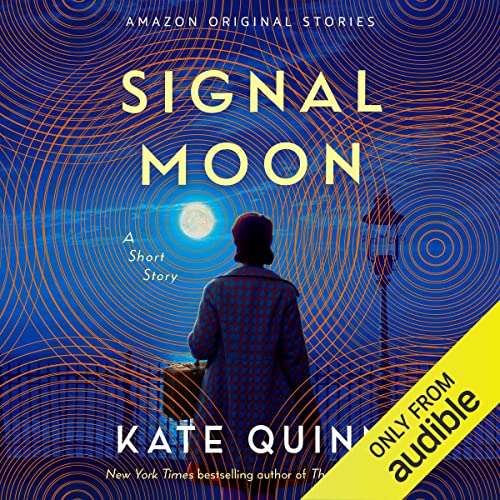 Signal Moon: A Short Story by
Signal Moon: A Short Story by 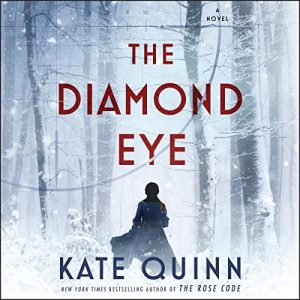 While Matt’s more frank and frequently profane dialog, along with the desperation of his own internal monologue, gives the reader or listener a clear portrait of who he is and what drove him to become the person – and the officer – that he is on the brink of what could be – briefly – his very own war.
While Matt’s more frank and frequently profane dialog, along with the desperation of his own internal monologue, gives the reader or listener a clear portrait of who he is and what drove him to become the person – and the officer – that he is on the brink of what could be – briefly – his very own war.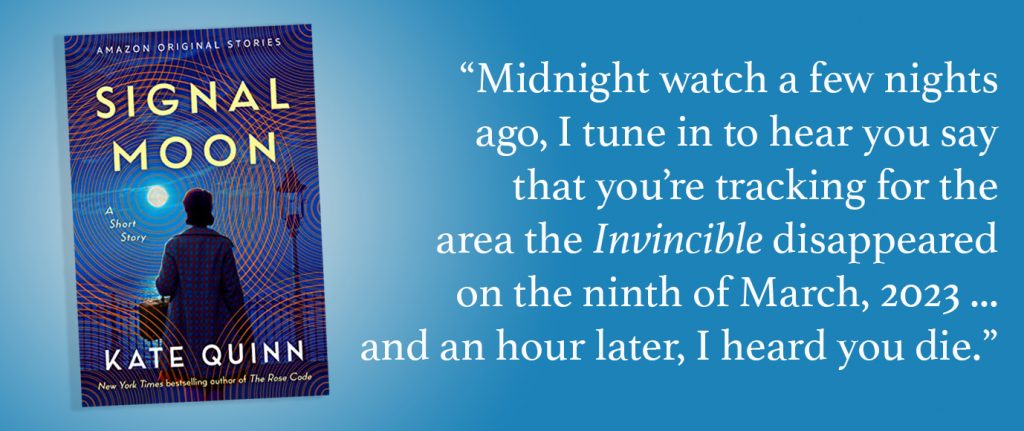
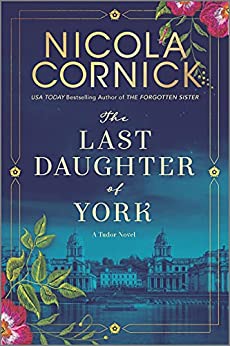 The Last Daughter of York by
The Last Daughter of York by 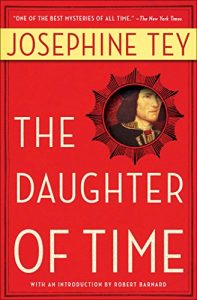
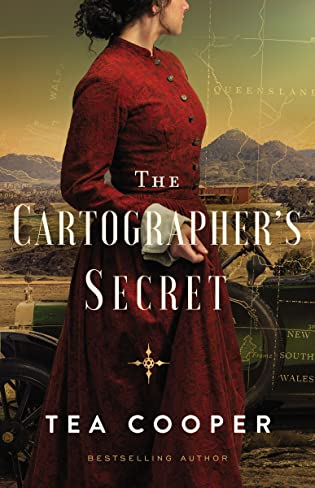 The Cartographer's Secret by
The Cartographer's Secret by 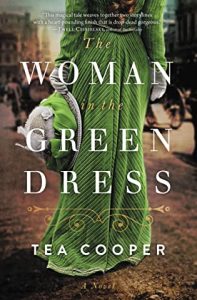 I picked this up because I loved not one but two of the author’s previous books,
I picked this up because I loved not one but two of the author’s previous books, 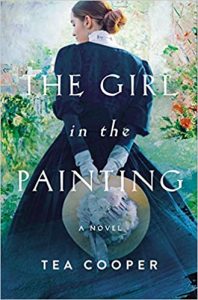 If only she can manage to stand up to her mother.
If only she can manage to stand up to her mother.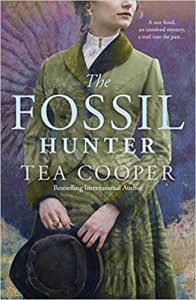 For this reader, it was the journey that I loved. The destination was cathartic, but what kept me glued to this book was the way that Lettie kept searching – even when the discoveries were painful.
For this reader, it was the journey that I loved. The destination was cathartic, but what kept me glued to this book was the way that Lettie kept searching – even when the discoveries were painful.
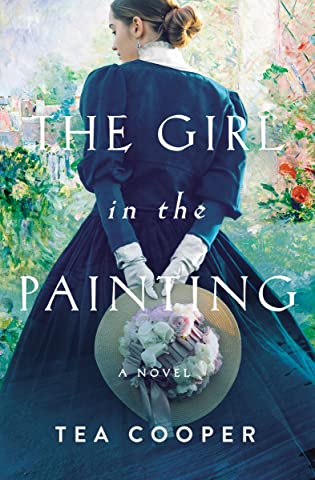 The Girl in the Painting by
The Girl in the Painting by 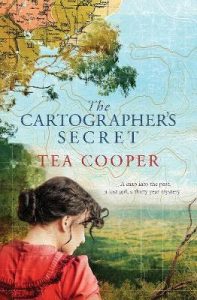 While I found Jane herself to be a bit of an unresolved character, more of a vehicle for the story to be told than an integral part of it, the story of Michael and Elizabeth Quinn’s rise from hardworking poverty to wealth and influence was fascinating in its portrayal of two people who lived a lie that was also the utter and absolute truth.
While I found Jane herself to be a bit of an unresolved character, more of a vehicle for the story to be told than an integral part of it, the story of Michael and Elizabeth Quinn’s rise from hardworking poverty to wealth and influence was fascinating in its portrayal of two people who lived a lie that was also the utter and absolute truth.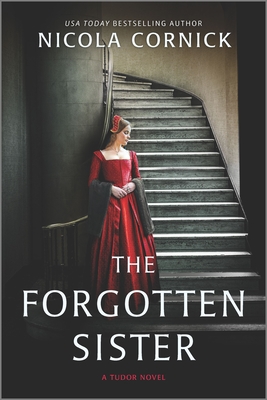 The Forgotten Sister by
The Forgotten Sister by 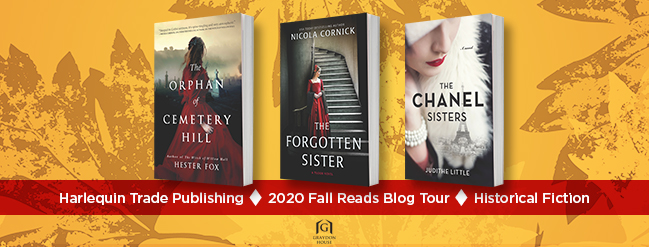
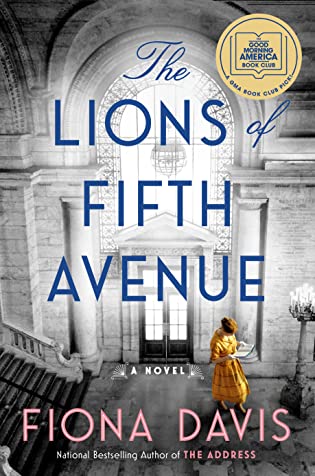 The Lions of Fifth Avenue by
The Lions of Fifth Avenue by  The Woman in the Green Dress by
The Woman in the Green Dress by 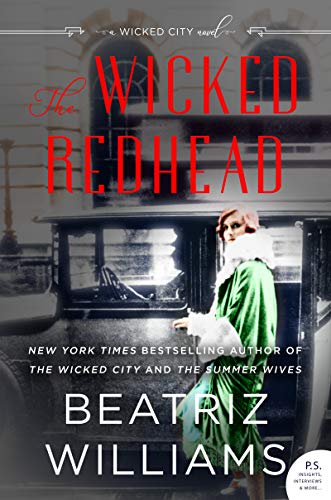 The Wicked Redhead: A Wicked City Novel by
The Wicked Redhead: A Wicked City Novel by 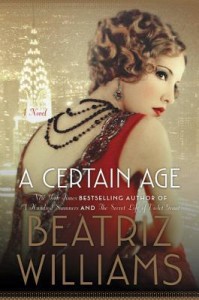 I picked up The Wicked Redhead because I absolutely loved this author’s
I picked up The Wicked Redhead because I absolutely loved this author’s  They run to Cocoa, Florida, straight to Anson’s friends Simon and Virginia, the protagonists of
They run to Cocoa, Florida, straight to Anson’s friends Simon and Virginia, the protagonists of 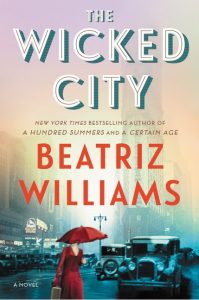 And that’s where this one fell down for me. I found Gin’s story absolutely fascinating – as I did in The Wicked City. But Ella’s story was much less interesting – but with all of those discoveries it was more of it than just a framing story. If we had stayed back in 1924 with Gin and her lovers, friends and enemies – as we did in the marvelous A Certain Age with Anson’s mother! – I’d have been a happy reader.
And that’s where this one fell down for me. I found Gin’s story absolutely fascinating – as I did in The Wicked City. But Ella’s story was much less interesting – but with all of those discoveries it was more of it than just a framing story. If we had stayed back in 1924 with Gin and her lovers, friends and enemies – as we did in the marvelous A Certain Age with Anson’s mother! – I’d have been a happy reader.